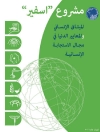This volume presents geographical journeys that challenge the limits of national or cultural identities, as well as journeys traversed by stories of exile and forced displacement, which become pilgrimages towards themselves, defying, in this process, both the limits of their own identities and the borders between the self and the other.
The volume is divided into three parts. The first part explores the circulation of writers and texts which have traveling as a common point of departure; the second part is dedicated to reflecting on the concept of Orientalism from multiple perspectives but preserving the perpetuation of colonial structures of subordination and otherization as a central axis around which all the proposed analyses revolve; the third part is dedicated to the formulation of new cultural patterns and identities in the Philippines, as results of the interactions and interconnectivities between Wests (Spain, United States) and Philippines.
विषयसूची
Introduction Journeys between Wests and Easts: Literary and cultural connections from and toward the Spanish-speaking world.-Part I: Crossroads between Asia and Latin America: writing through traveling and traveling through reading.- Juan Bustamante: the first non-creole, non-lettered Latin American who lived and wrote the nineteenth-century China.-Travel Writings as Re-Writings of the East: In light of India by Octavio Paz and Coronada de Mosca by Margo Glanz.- The Asian Signs of the Cuban Neobaroque: A Reading of Lezama and Sarduy.-Part II: Journeys across narratives of identity: Easts and Wests in the hybridity.-Japón no da dos oportunidades de Augusto Higa Oshiro: the birth of a Peruvian Nisei Writer.-Palestinian-Chilean Decolonialist Discourse in La llave by Esperanza Marzouka.-Displacement and Sexile in the Films Fireflies (2019) by Bani Khoshnoudi and Happy Together (1997) by Wong Karwai.-From Miseries of the East to the Glorification of the West: An Orientalist Insight in Zindagi Na Milegi Dobara (You Only Live Once) and Represtation of India In Hispanic Cinema.-Part III: The Philippines in Spanish: The West in the East?.-Alejandro Cubero and Elísea Raguer, two Spanish Zarzuelistas in the Development of Filipino Lyrical Theater (from 1881 to 1897).-Los ascensos del inspector Rojo (The Ascents of Inspector Rojo, 1924) by Guillermo Gómez Windham: The Optimistic Face of the Philippines under American Tutelage.
लेखक के बारे में
Emmanuelle Sinardet is professor for Latin American Studies in University Paris Nanterre, France, where she teaches Latin American economic, political and cultural history.
Ana María Ramírez Gómez currently works as a doctoral research fellow in the Department of Literature, Area Studies and European languages at the University of Oslo, Norway.












